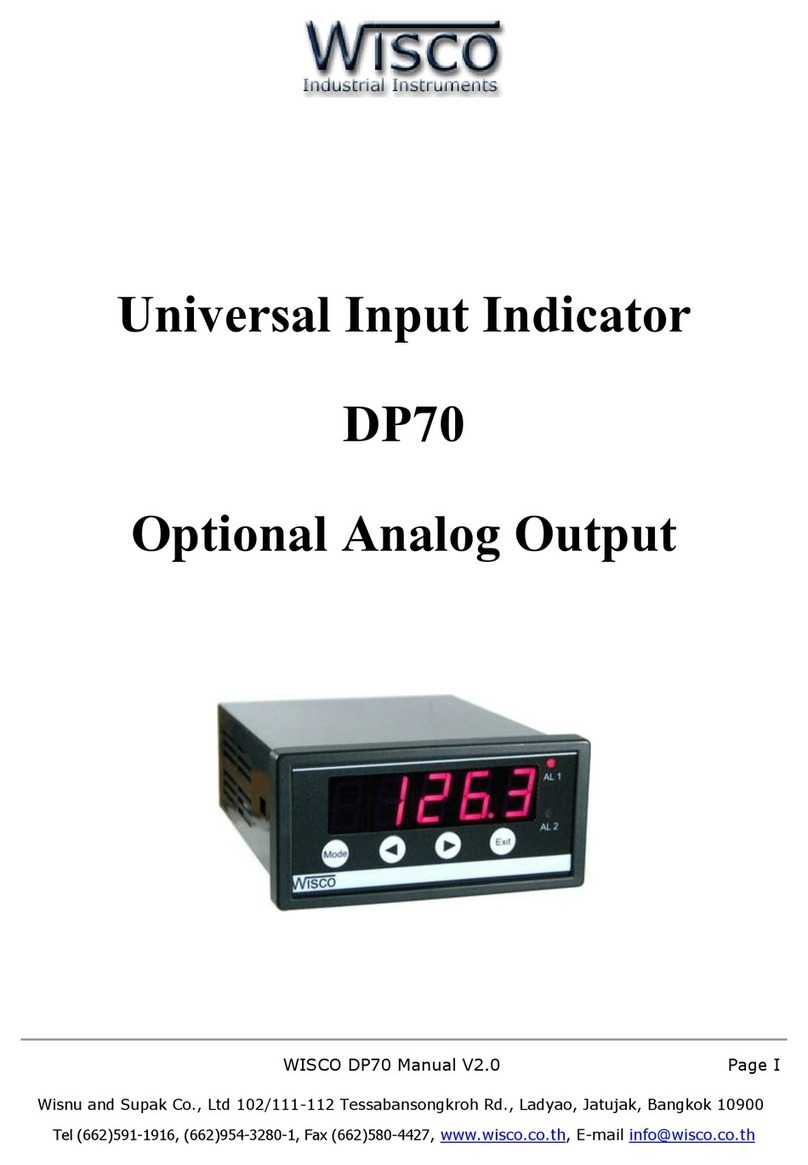
WISCO DP21 Manual V1.1 Page 1 of 8
Wisnu and Supak Co., Ltd 102/111-112 Tessabansongkroh Rd., Ladyao, Jatujak, Bangkok 10900
Tel (662)591-1916, (662)954-3280-1, Fax (662)580-4427, www.wisco.co.th, E-mail info@wisco.co.th
Rate Meter & Totalizer
DP21
Normal Operating Mode
In the normal operating mode the display indicate either the rate or the
counter. And „r‟ on the left of the display signifies the rate. The display may
be toggled by pressing the „Select‟ (SEL) button.
Totalizer
Module DP21 receives incoming pulses and multiplies them by the
Count Scale Factor. The unit‟s counter (internal count value) keeps track
of the scaled input pulse count which results in the desired reading value
for the count display.
The Count(s) reset to zero when a manual reset is performed. At
loss of power to the unit, the contents of the counter are saved. This
allows counting over consecutive shifts, days, etc. The total count can
accumulate to 99,999,999 (The counter value will roll over and flesh „tot
OVEr‟ when the count value exceeds 99,999,999 indicating an overflow
condition.
Rate
Module DP21 use a time interval method to calculate the rate
value. The unit counts on the negative edge of the input pulses. After the
programmed minimum update time elapses and the next negative edge
occurs, the unit counts the number of edges that occurred during the
elapsed time. The number of edges is multiplied by the rate scaling value
to calculate the rate value.
At slower rates, averaging can be accomplished by programming the
rate minimum update time for the desired response. Extensive scaling
capabilities allow practically any desired reading at very slow count rates.




























